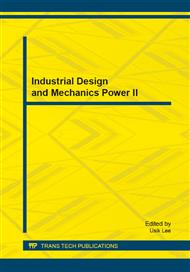[1]
A. B. Ashraf, S. Lucey, and T. Chen. Learning patch correspondences for improved viewpoint invariant face recognition, (2007).
DOI: 10.1109/cvpr.2008.4587754
Google Scholar
[2]
P. Belhumeur, J. Hespanha, and D. Kriegman. Eigenfaces vs. fisherfaces: Recognition using class specific linear projection. Pattern Analysis and Machine Intelligence, IEEE Transactions on, 1997, 19(7): 711–720.
DOI: 10.1109/34.598228
Google Scholar
[3]
V. Blanz and T. Vetter. Face recognition based on fitting a 3d morphable model. IEEE Transactions on pattern analysis and machine intelligence, 2003, p.1063–1074.
DOI: 10.1109/tpami.2003.1227983
Google Scholar
[4]
C. Castillo and D. Jacobs. Using stereo matching with general epipolar geometry for 2d face recognition across pose. IEEE Transactions on pattern analysis and machine intelligence, 2009, p.2298–2304.
DOI: 10.1109/tpami.2009.123
Google Scholar
[5]
X. Chai, S. Shan, X. Chen, and W. Gao. Locally linear regression for pose-invariant face recognition. Image Processing, IEEE Transactions on, 2007, 16(7): 1716–1725.
DOI: 10.1109/tip.2007.899195
Google Scholar
[6]
D. Gonza´lez-Jime´nez and J. Alba-Castro. Toward pose-invariant 2d face recognition through point distribution models and facial symmetry. Information Forensics and Security, IEEE Transactions on, 2007, 2(3): 413–429.
DOI: 10.1109/tifs.2007.903543
Google Scholar
[7]
R. Gross, S. Baker, I. Matthews, and T. Kanade. Face recognition across pose and illumi- nation. Handbook of Face Recognition, 2005 p.193–216.
DOI: 10.1007/0-387-27257-7_10
Google Scholar
[8]
R. Gross, I. Matthews, and S. Baker. Appearance-based face recognition and light-fields. Pattern Analysis and Machine Intelligence, IEEE Transactions on, 2004, 26(4): 449–465.
DOI: 10.1109/tpami.2004.1265861
Google Scholar
[9]
A. Li, S. Shan, X. Chen, and W. Gao. Maximizing intra-individual correlations for face recognition across pose differences, (2009).
DOI: 10.1109/cvpr.2009.5206659
Google Scholar
[10]
X. Liu and T. Chen. Pose-robust face recognition using geometry assisted probabilistic modeling. In Computer Vision and Pattern Recognition, IEEE Computer Society Conference on, volume 1, pages 502–509. IEEE Computer Society.
DOI: 10.1109/cvpr.2005.276
Google Scholar
[11]
P. Phillips, H. Moon, S. Rizvi, and P. Rauss. The feret evaluation methodology for facerecognition algorithms. Pattern Analysis and Machine Intelligence, IEEE Transactions on, 2000, 22(10): 1090–1104.
DOI: 10.1109/34.879790
Google Scholar
[12]
S. Prince, J. Elder, J. Warrell, and F. Felisberti. Tied factor analysis for face recognition across large pose differences. IEEE Transactions on pattern analysis and machine intelligence, 2008, p.970–984.
DOI: 10.1109/tpami.2008.48
Google Scholar
[13]
T. Sim, S. Baker, and M. Bsat. The cmu pose, illumination, and expression database. Pattern Analysis and Machine Intelligence, IEEE Transactions on, 2003, 25(12): 1615–1618.
DOI: 10.1109/tpami.2003.1251154
Google Scholar
[14]
L. Wiskott, J. Fellous, N. Kuiger, and C. von der Malsburg. Face recognition by elastic bunch graph matching. Pattern Analysis and Machine Intelligence, IEEE Transactions on, 1997, 19(7): 775–779.
DOI: 10.1109/34.598235
Google Scholar
[15]
J. Wright, A. Y. Yang, G. Arvind, S. S. Sastry, and Y. Ma. Robust face recognition via sparse representation. IEEE Transactions on pattern analysis and machine intelligence, 2009, 31: 210–227.
DOI: 10.1109/tpami.2008.79
Google Scholar
[16]
Z. Zhou, G. A., J. Wright, T. Shen-Fu, and Y. Ma. Nearest-subspace patch matching for face recognition under varying pose and illumination. In Automatic Face and Gesture Recognition, 8th IEEE International Conference on, 2008, p.1–8.
DOI: 10.1109/afgr.2008.4813452
Google Scholar


